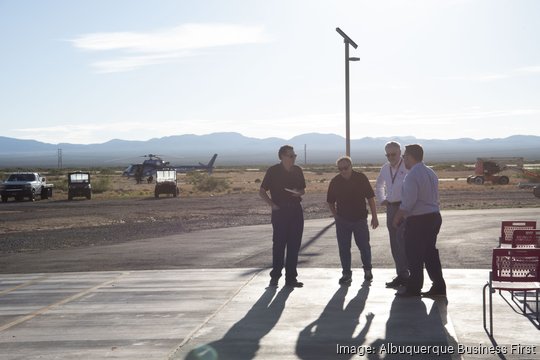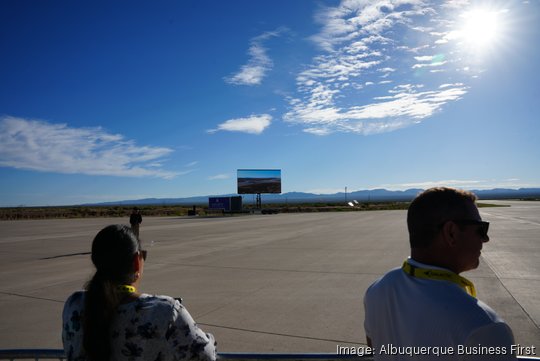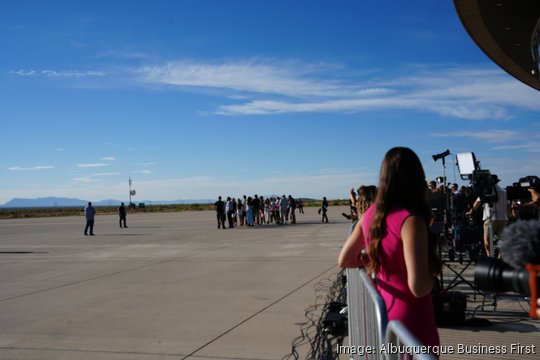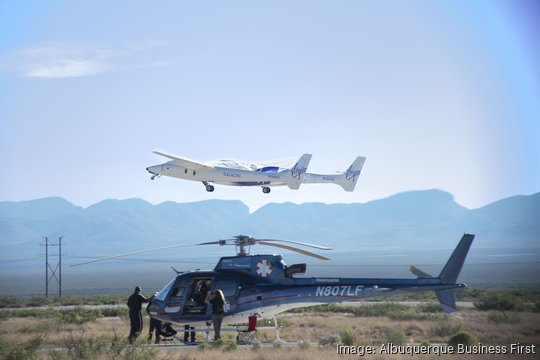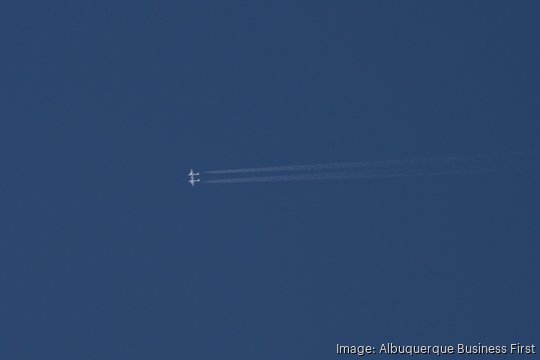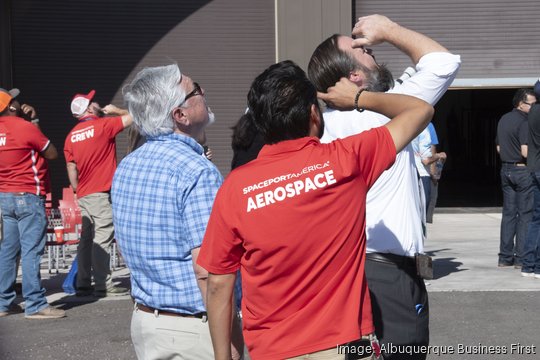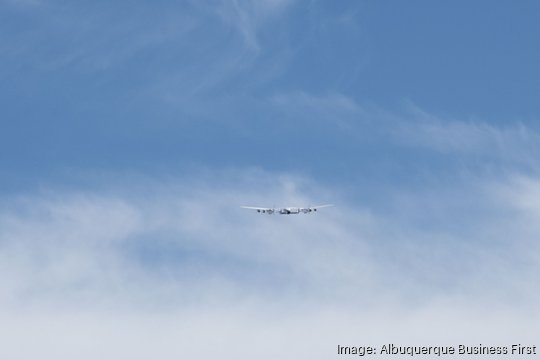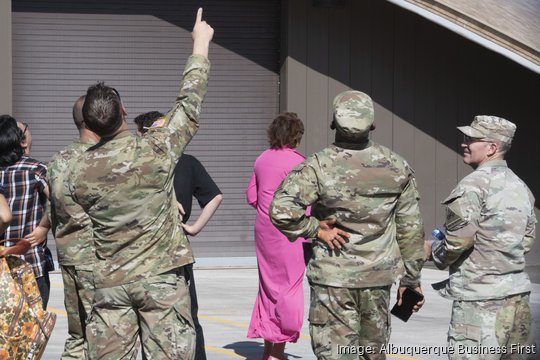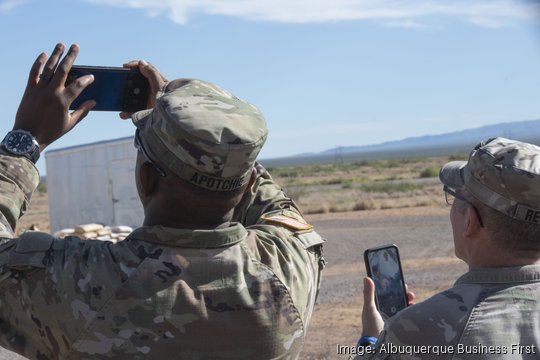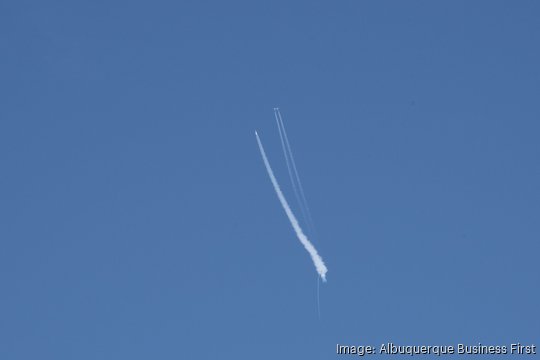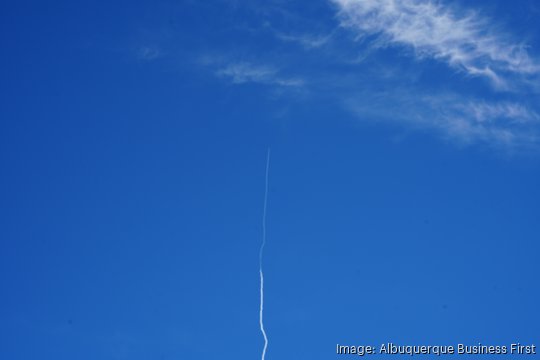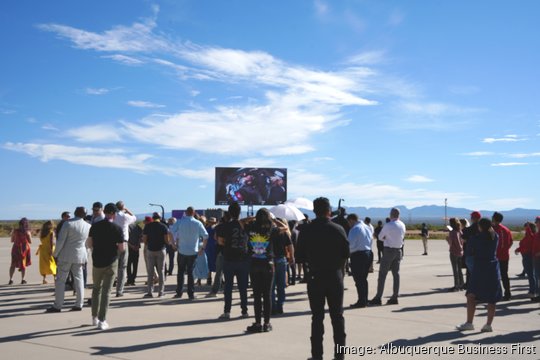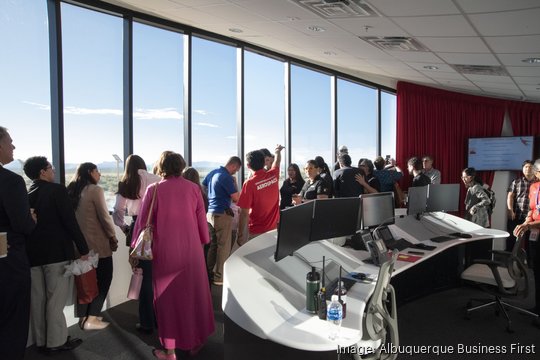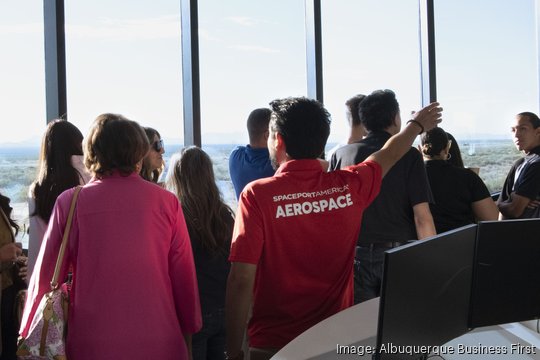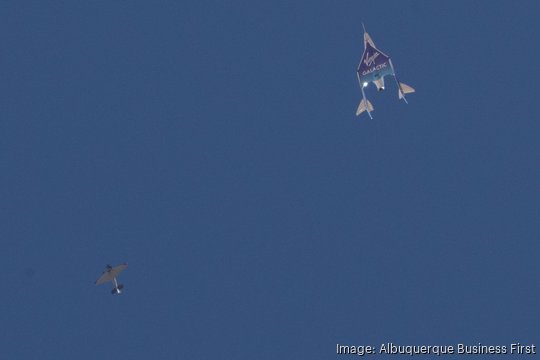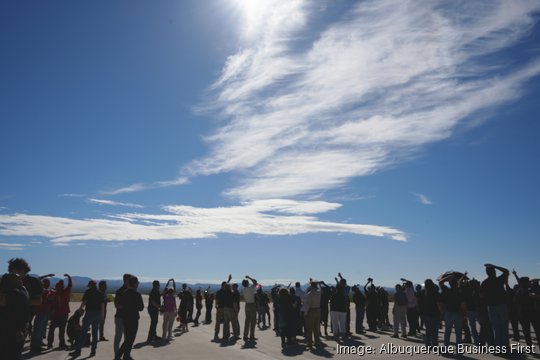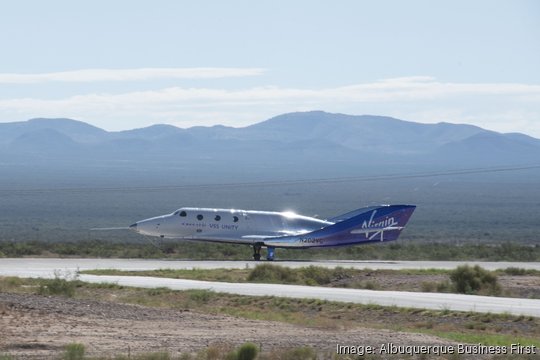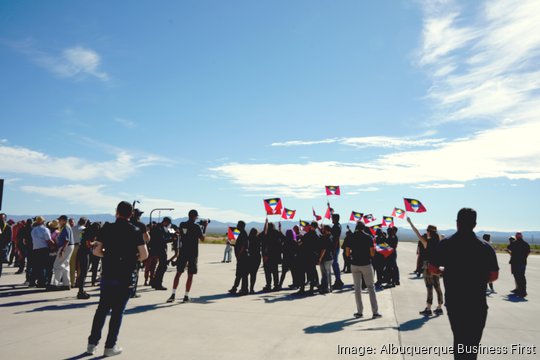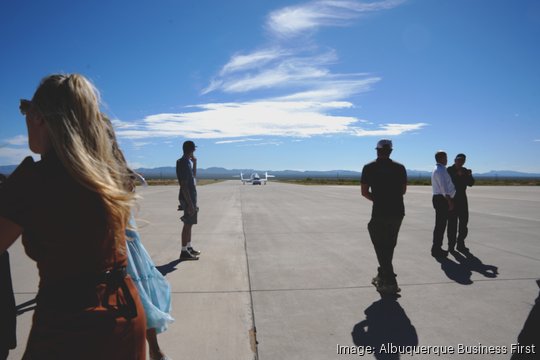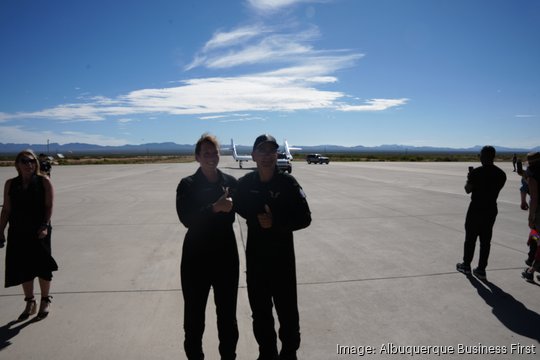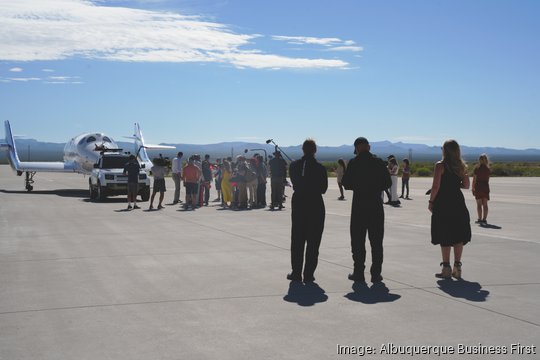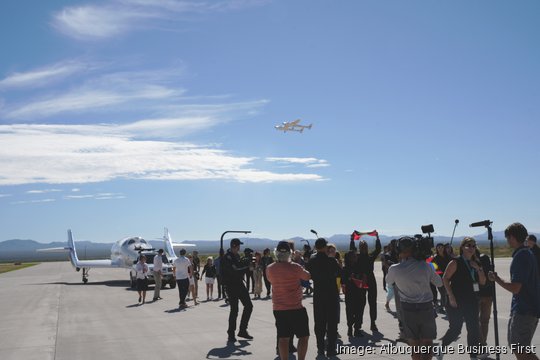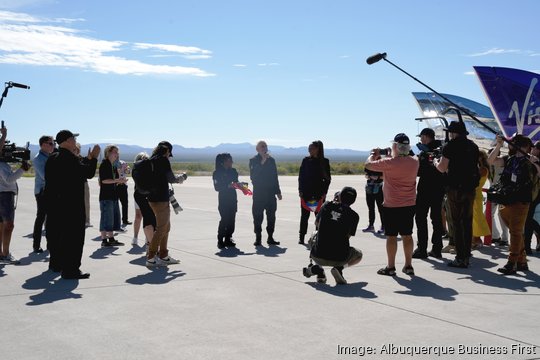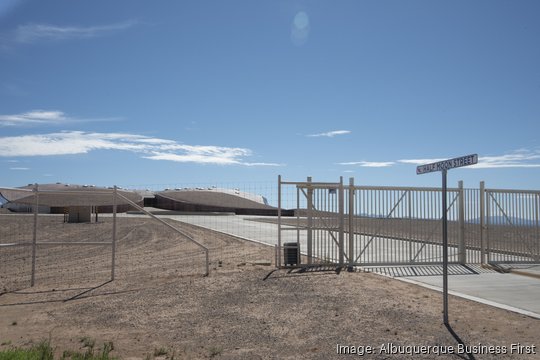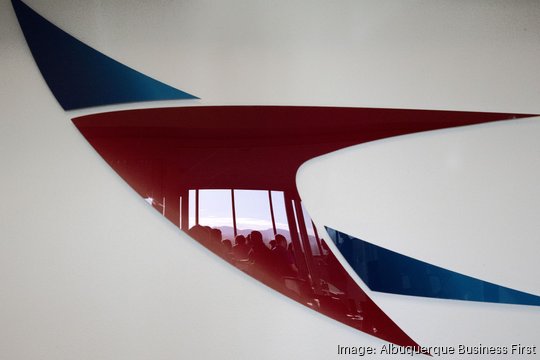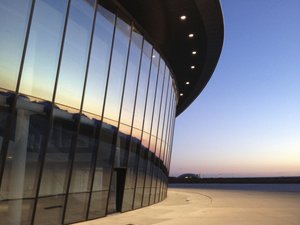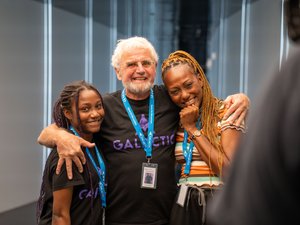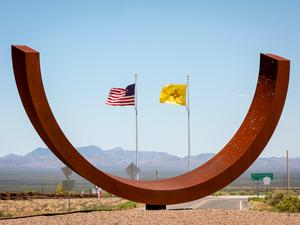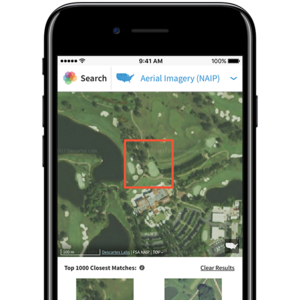A dry wind whipped over southern New Mexico as Virgin Galactic's spaceship glided toward Spaceport America.
Onlookers waited outside the Spaceport's "Gateway to Space" building — some holding professional cameras, some waving Antiguan flags, others sporting white umbrellas to protect themselves from the glaring sun. All eyes pointed upward, hair blowing in every direction as they watched the ship drop through patches of clouds.
At around 10 a.m. on Aug. 10, as the breeze continued to blow, four astronauts stepped out of that white spacecraft. Jon Goodwin, an 80-year-old man who almost a decade ago was diagnosed with Parkinson's disease, ran up and nearly jumped in the arms of his wife, Pauline, who stood waiting on the tarmac.
Goodwin was one of the four astronauts on board VSS Unity, the spaceship designed by space tourism company Virgin Galactic to carry private passengers into zero gravity 50 miles up and then back down to Earth. Keisha Schahaff and Anastatia Mayers — a mother and daughter from the Caribbean country Antigua and Barbuda — joined Goodwin as first-time astronauts on board Unity. Beth Moses, Virgin's lead astronaut instructor, also sat inside the ship.
It was the first time Virgin Galactic had accomplished its long-time objective — fly private paying passengers to space. That was the goal set by its founder Sir Richard Branson when he founded the company in 2004.
The company has run three spaceflights out of Spaceport America — a May 25 final test flight and a June 29 research mission, alongside August's private astronaut trip — over the past four months and expects five more spaceflights out of the Spaceport before the end of the year.
Now that Virgin's commercial service has started to take off, Albuquerque Business First talked with Spaceport America executives and aerospace industry leaders to better understand what that means for the Spaceport's business model and how it could evolve in the future.
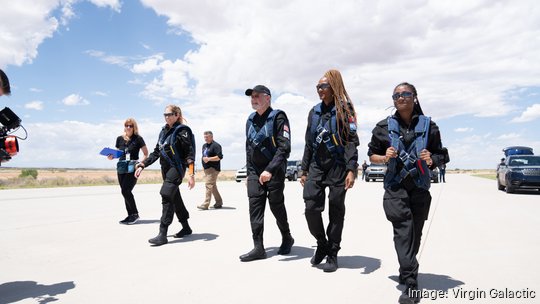
Fifteen years in the making
In late December 2008, then-executive director of the New Mexico Spaceport Authority, Steve Landeene, signed a 20-year lease agreement with Virgin Galactic. That agreement formalized plans Branson announced three years earlier to make Spaceport America the home of Virgin's spaceflight operations.
The lease agreement between Virgin Galactic and the Spaceport Authority — the state body that oversees Spaceport America — called for Virgin to pay $1 million in rent to the Authority over the first five years and then a 20-year amortization cost over the remaining 15 years of the agreement, according to a document attached to an August 2019 U.S. Securities and Exchange Commission (SEC) filing.
Almost two years after the lease was signed, Branson and former New Mexico Gov. Bill Richardson met at Spaceport America, located about 25 miles southeast of Truth or Consequences, to dedicate the Spaceport's new two-mile-long runway. A decade later, Virgin Galactic would use that runway to carry Branson and three "mission specialists" into space for the first time.
Now, two years later still, Virgin Galactic's first three private astronauts reached space during an hour-and-a-half-long mission, dubbed "Galactic 02." That matches the company's long-time objective, as clarified in an August 2020 SEC filing, to "provide high net worth individuals with a dynamic spaceflight experience at a fraction of the expense incurred by other private individuals to date."
Since Richardson and Branson's handshake 15 years ago, a large question has hovered over the Spaceport and its spot in the local aerospace industry: Is that industry's success in New Mexico tied solely to the success of Virgin Galactic?
Current Gov. Michelle Lujan Grisham doesn't necessarily think so. She told Albuquerque Business First in late October 2022 that other aerospace companies in the state, like Albuquerque-based X-Bow Systems Inc. and Moriarity-based Sceye Inc., play as big a role in developing New Mexico's aerospace "ecosystem," Lujan Grisham said.
Scott McLaughlin, the executive director of Spaceport America, thinks similarly.
"The focus on the Spaceport in the past has been, 'Is Virgin Galactic ever going to fly?' That's the only metric as to whether the Spaceport is considered a success or not," McLaughlin said. "We're realizing — even as visionary as the Spaceport was and as visionary as Virgin Galactic's goals were — that was still short-sighted.
"It didn't allow looking at this ecosystem that we think we can help fill out between Los Alamos and El Paso, where the Spaceport becomes a keystone," he continued.
Still, Virgin Galactic does play a large role in that statewide ecosystem. The company is Spaceport America's "anchor" tenant. Its multi-purpose hangar, called the Gateway to Space building, was the first to go up at the 18,000-acre Spaceport.
Virgin employs about 300 people in New Mexico. That number could grow closer to 400 as the company runs flights more often and gets its planned astronaut training campus in the state up and running, McLaughlin said. Virgin Galactic announced plans for its training facility in August last year but has been hesitant to give updates; Michael Colglazier, Virgin Galactic's CEO, has been less shy about the progress on its next generation of spaceships and expected once-a-month flights.
"In terms of the complete picture of return on investment, Virgin Galactic is still providing the biggest bang for the buck," McLaughlin said.

What's the role of the other Spaceport tenants?
Although Virgin Galactic is the anchor, the tourism company isn't the Spaceport's only permanent tenant. There are five others including Long Beach, California-based SpinLaunch; UP Aerospace Inc., headquartered in Denver; Arlington, Virginia's AeroVironment Inc. (Nasdaq: AVAV); Japan-based HAPSMobile; and an undisclosed unmanned aerial vehicle company.
Other companies are more "episodic," McLaughlin said. They come in and out to run one-off tests or conduct operations for a few months without keeping a permanent employee base in the state. Altogether, he said, customers outside of Virgin Galactic bring in about one-fifth of the revenue Virgin contributes to the Spaceport.
Lease and user fee revenue account for the bulk of the Spaceport Authority's total annual revenue. Besides operational revenue, the Spaceport's original capital outlay of around $215 million was funded by state bond money, paid for in part by gross receipts taxes leveraged against Sierra County — where the Spaceport is located — and Doña Ana County in southern New Mexico, home to Las Cruces, alongside state severance tax money.
McLaughlin said those bonds are still being paid off, but commissioners in Doña Ana County have started a process to amend its Spaceport tax by dropping the tax amount to 0.1875% and giving it a "sunset" date of June 30, 2029. The tax ordinance doesn't currently have a sunset date.
"Now that the Spaceport is moving into a new phase with Virgin Galactic operations, I think it's now appropriate to start looking at those kinds of taxes and that sort of return on investment to see if it's what the taxpayers want," McLaughlin said.
Overall, Spaceport America is an "economic development activity," he said. It measures internal profitability in terms of its customers and services provided, but as a state agency, McLaughlin said job creation and economic impact in New Mexico are the most significant metrics used to measure the Spaceport's success. He said about 340 direct jobs and close to 800 indirect jobs are connected with the Spaceport.
Part of its function as an economic development activity comes through referrals. Francisco Pallares, business development director for Spaceport America, said he points companies to Sierra and Doña counties or other spots in the state if they aren't a fit at the Spaceport. For example, sometimes companies have manufacturing needs that require a lot of water or high-grade utilities that the remote aerospace facility can't accommodate.
"We go for that strategy — [first]the Spaceport, then both Doña Ana and Sierra counties, and then we go for New Mexico," Pallares said. "But if you think about it, it's all New Mexico. All of it is located here, and what we want is the impact to stay in the state for as long as possible."
The business of the future
It could be fair to say business at Spaceport America hasn't really taken off — yet. The $200 million-plus state investment generated only $7.7 million in total revenue last fiscal year. But the two-decade-old Spaceport's business play could be longer term.
"Some might say, 'Why do you need all these spaceports? Why is it taking so long for this investment to show a return?' Those may have been valid criticisms if you look at the window of 2015 to 2020," said James Causey, the executive director of the Global Spaceport Alliance. "But if you look at the window 2023 to 2028, it's going to be amazing what's going to happen in the next five years."
That's because the commercial spaceport industry is still in its infancy, Causey said. There are 15 Federal Aviation Administration-licensed spaceports in the U.S., not including the private commercial launch sites for Blue Origin and SpaceX in Texas, according to the administration's website. The bulk of those are less than two decades old; Spaceport America is one of the oldest and the only one authorized for both horizontal and vertical launches.
Space could grow to become a trillion-dollar industry in the next decade, according to a report by McKinsey & Co, with Spaceport America, and space tourism, playing a substantial role.
"Scott [McLaughlin] and [Sir Richard] Branson and the team are looking very, very good in terms of their ability to get tourism to be a major piece of what a commercial spaceport can offer," Causey said.
McLaughlin and Pallares also see the potential for the Spaceport to act as an "intermodal" transportation hub for the space logistics industry, McLaughlin said. That's thanks partly to Spaceport America's location near the Santa Teresa industrial area and port of entry and partly because of its position near a freight corridor.
The Spaceport could, for example, use the nearby railroad to bring in commodities required for orbital launches, like fuel, as well as cargo to send into space. It could also act as one spot on a point-to-point global logistics network, where parts could be sent into orbit onboard spacecraft and then delivered back down at a different point on Earth in a fraction of the time it would take an airline, the two spaceport executives said.
But to get there, Spaceport America would need to be equipped for orbital launches — which it currently isn't. Right now, the spaceport is only federally authorized for horizontal and sub-orbital vertical launches. Virgin Galactic, for example, takes off and lands horizontally, then boosts into space while already in the air.
It would also need to bring in more customers across various aerospace-related industries — a goal Pallares said the Spaceport is working toward through outreach at industry events.
"It's good to have the customers that come and go. We have lots of those now," McLaughlin said. "They realize that we're a good test area, we're good for some short-term operations.
"But trying to focus on those who are going to have a permanent workforce here and long-term jobs and add good revenue to the Spaceport, that's where we're having to look," he continued. "In the commercial space market there's just so much going on, there's plenty to look at. But trying to figure out what we're going to be the best at and who we should be talking to, that's still an interesting proposition right now."
